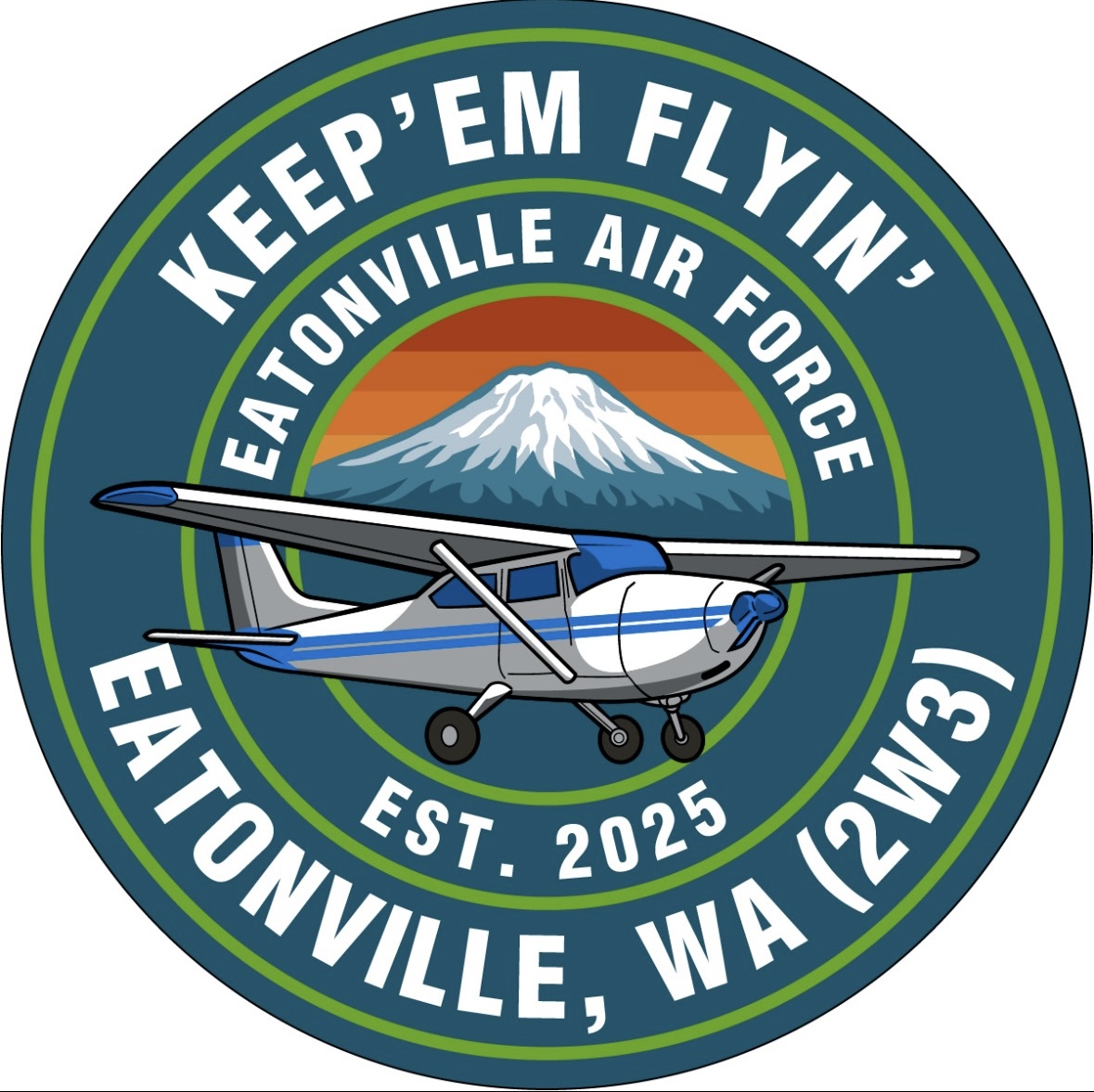Here is some helpful information to operate in and out of 2W3
Swanson Field (2W3) is a beautiful, public-use airport nestled at the base of Mount Rainier in Eatonville, WA. While it offers a unique experience and stunning views, it also presents specific challenges that require extra awareness and preparation.
✈️ Airport Overview
- Runway: 16/34 (2,990 feet x 60 feet, asphalt)
- Elevation: 860 feet MSL
- Traffic Pattern Altitude: 1,860 feet MSL
- CTAF: 122.9 MHz
- Surface: Asphalt (narrow and tree-lined)
- Lighting: Basic runway lights
⚠️ Common Challenges at Swanson Field
1. Short, Narrow Runway, No Taxiways
- At just under 3,000 feet long and only 60 feet wide, 2W3 demands accurate approach speeds and landing technique.
- There is a section of dips around the first 1,000 feet of 34. If you stay to right the dips are not as aggressive.
- There are no taxiways, you must back taxi on the runway.
Advice:
Use stabilized approach techniques, aim for a firm touchdown in the first third of the runway, and go around early if you’re not confident.
2. Obstacle Clearance
- Tall terrain surrounds both ends of the runway, requiring a steeper than normal approach and climb.
- Departing runway 16 requires a turn to the west due to high terrain on the departure end with houses at the top of the hill.
- Obstacle departure procedures are not published — use good judgment and ensure your aircraft’s performance matches density altitude conditions.
Advice:
Know your aircraft’s climb performance. If departing Runway 34 on a warm day, keep the load light and climb straight out until well clear of obstacles before turning.
3. Weather
- Terrain rises quickly to the southeast toward Mount Rainier.
- Can cause turbulence and downdrafts — especially on warmer days or when the winds aloft are strong from the east.
Advice:
Remain west of the airport when maneuvering, especially at low altitudes. Plan your route to avoid getting trapped in rising terrain if a go-around or escape is needed.
4. No Weather Reporting
- There’s no on-field AWOS/ASOS, and no control tower.
- Weather can change quickly due to proximity to the Cascades — fog, low clouds, or unexpected crosswinds are not uncommon.
Advice:
Check nearby weather stations (e.g., Pierce County Airport, Olympia, or McChord) and use ADS-B weather. Always have a solid alternate plan in case conditions deteriorate.
5. Uncontrolled Field with Mixed Traffic
- Swanson is used by a variety of aircraft: taildraggers, ultralights, helicopters, and the occasional twin or turboprop.
- No ground frequency — all operations coordinated on CTAF.
Advice:
Make standard position calls on 122.9, monitor closely from 10 miles out, and be especially clear in your intentions. Be vigilant in the pattern and during taxi, as aircraft often taxi along or across the runway.
🧭 Pilot Safety Tips for Swanson Field
- Use a Checklist: Fly by the book, especially for short field takeoffs/landings.
- Walk the Runway if You’re New: If visiting by car or on foot before flying in, walk the field to understand sightlines, there are no taxiways.
- Practice Go-Arounds Before You Visit: If you haven’t flown into a tight, obstacle-limited field before, brush up on go-around and short field work at your home base.
- Talk to a Local: If you’re unfamiliar, reach out to the Eatonville Air Force or a local pilot based at 2W3 for local knowledge and insights.
🛡️ Summary
Flying into Swanson Field is a rewarding experience, offering access to the foothills of the Cascades and a welcoming aviation community. However, due to its short, surrounding terrain, and lack of tower or weather services, it demands careful preparation, good airmanship, and sharp situational awareness.
✅ Fly smart. Communicate clearly. Know your airplane. Respect the terrain.
Welcome to Swanson Field — fly safe and enjoy the view!
